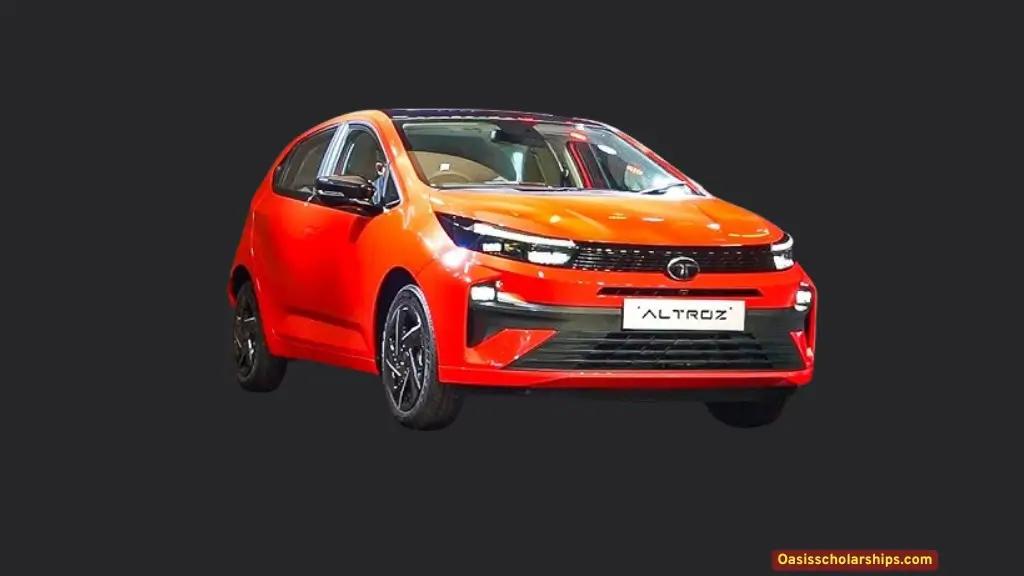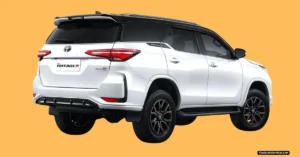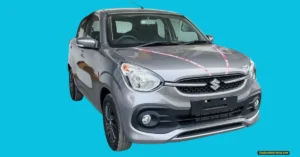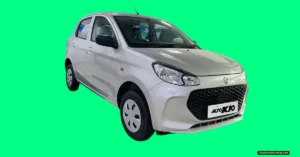Hello, friends! I am Dhruv Verma. I welcome you all. Today we will talk about the home of one of India’s most hyped electric hatchbacks—the Tata Altroz EV 2025. This car is a combination of practicality, performance, and smart tech in an attractive package; that, as part of Tata Motors’ push towards sustainable mobility. In this detailed look, we’ll take a look at range, battery setup, and charging capabilities.
A Stylish Hatch That Also Happens to Be Electric
As for design, the Altroz EV continues to feature the familiar strong design language of the ICE version, but small additions in terms of accents in blue, a closed-off grille, and aerodynamic wheel covers complement it. Without losing any road presence, it looks modern and futuristic. Yet because of its hatchback form, it’s also good for driving in the city and on weekend trips.
Built Around Tata’s ZS EV Platform for Better Efficiency
Above the sleek body is Tata’s advanced ZS EV platform, which they’re using for the first time in the Nexon EV and Tiago EV. The planar battery allows the optimal placement of batteries and their weight distribution. On top of that, it also allows fast charging and long-range capability to make the Altroz EV more than just an urban commuter.
Powerful Electric Motor With Instant Torque Delivery
A high-performance electric motor powers the Altroz EV, which is smooth and responsive. It boasts brisk off-the-line performance and easy passability and is expected to produce around 75 kW (100 PS) of power and 160 Nm of torque. Unlike regular engines, the motor operates with the instant torque of a sportier driving experience.
| Feature | Details |
|---|---|
| Brand | Tata Motors |
| Model Name | Tata Altroz EV 2025 |
| Vehicle Type | Premium Electric Hatchback |
| Powertrain | Tata’s Ziptron EV Architecture |
| Battery Capacity | 30–40 kWh (Expected) |
| Driving Range | 300–400 km (Certified) |
| Motor Type | Permanent Magnet Synchronous Motor (PMSM) |
| Max Power (Expected) | ~95–110 PS |
| Max Torque | ~200 Nm |
| Transmission | Single-Speed Automatic |
| Charging Options | Fast Charging (DC) + Regular Home Charging (AC) |
| 0–100 km/h | Under 10 seconds (Expected) |
| Top Speed | 140–150 km/h (Estimated) |
| Chassis & Platform | ALFA Architecture (EV-Optimized) |
| Brakes | Front: Disc / Rear: Drum |
| Suspension | McPherson Strut (Front) / Twist Beam (Rear) |
| Interior Features | 10.25″ Touchscreen, Auto AC, Cruise Control, Digital Cluster, Connected Tech |
| Safety Features | 6 Airbags (Expected), ABS with EBD, ESC, Rear Camera |
| Boot Space | ~345 Litres |
| Wheels | 16-inch Alloy Wheels |
| Exterior Highlights | EV Badge, Aero Grille, Blue Accents, LED DRLs, Projector Headlamps |
| Infotainment System | Harman System with Apple CarPlay & Android Auto |
| Expected Launch | Late 2025 |
| Expected Price | ₹11.5 – ₹14.5 Lakh (Ex-showroom) |
| Variants (Expected) | XE+, XM, XZ+, XZ+ Lux (Based on ICE trims) |
| Official Website | www.tatamotors.com |
With a single charge, this long-range variant promises over 400 km.
Among the biggest highlights of the Altroz EV will be its claimed range of 400 km on a single charge under WLTP testing. And, as its rivals like the Hyundai Kona Electric and MG ZS EV will attest to, it does. Real-world usage may bring that figure down slightly.
Advanced Lithium-ion Battery Pack for Stability and Safety
A high-density lithium-ion battery pack, with passive and active cooling, is likely to be used by Tata to ensure longevity and safety. Because of this, the battery is placed under the floor to keep cabin space free and the center of gravity low. The better handling layout protects the battery from bumps and potholes.
Smart Battery Management System for Optimal Performance
Cell temperature, voltage levels, and the charging cycle of a battery are monitored by a sophisticated BMS (Battery Management System) to be as efficient and extend the life of the battery as much as possible. Further range is achieved with regenerative braking, which recovers energy during deceleration. Drive modes or paddle shifters can be used to change the regen levels—a personalized experience for the drivers.
A Fast DC Charger Capable of Replenishing 80% in Less than 60 Minutes
The DC fast charging with the Altroz EV is 50–60 kW and can charge from 10% to 80% in about an hour. It’s all the reason that makes this ideal for a quick little top-up while on longer drives or at public charging stations. For the biggest battery you might get, a full charge using a home wallbox should take around 7 hours.
Home Charging Made Easy with Standard Type 2 Charger
All Altroz EVs should come standard with a Type 2 AC charger, usable with home sockets or dedicated EV charging points. Tata is also expected to offer wallbox installation as an optional feature for faster overnight charging. As such, the ownership is hassle-free even for people without access to public fast chargers.
Drive Modes for Customized Driving Experience
Just like the other modern EVs, the Altroz EV is expected to come with a number of drive modes: Eco, City, and Sport. Throttle response, strength of regenerative braking, and other climate control settings automatically adjust themselves accordingly. This helps to increase the range and provide a more tailored ‘ride’ along the way.
Connected Tech That Keeps You Informed About Battery Status
Owners can check on the battery status, charging progress, and estimated range straight through their phones. Additionally, the app allows users to pre-condition the cabin temperature prior to departure, cutting operating energy use as soon as the vehicle is in use. Further, location-based charging station maps are expected to be included.
Efficient Thermal Management for Consistent Battery Performance
In order to ensure stable output in varying climates, the Altroz EV is likely to have a very advanced thermal management system. Whatever the weather—extreme heat or cold—the system keeps the battery at an optimal operating temperature. That way, you get consistent performance, and you don’t hammer the battery health over time.
Competitive Warranty and Battery Health Assurance
Buyers will have peace of mind thanks to the generous warranty package Tata is expected to offer—eight years or 160,000kilometers on the battery. In some variants, you could have battery health monitoring features that would monitor degradation and, if degradation goes over the allowable range, would alert the owner. This gives the EV Altroz a safer investment.
Conclusion
One of India’s most compelling compact hatchbacks, the Tata Altroz EV 2025, is taking shape. The impressive range, smart battery tech, and user-friendly charging options mean it’s a genuine alternative to petrol-powered hatchbacks, and yes, it’ll easily get you to work and back.






